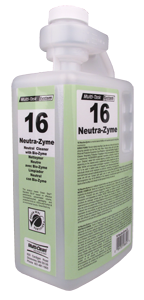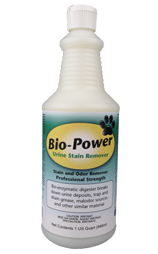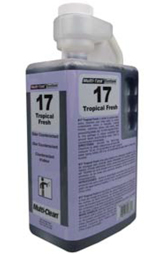Choosing a Deodorizer
An odor is one of the most noticeable characteristics of a building or facility, and a bad odor can serve as an indication to customers or visitors that the building is dirty, regardless of its appearance. Even if a facility appears or looks clean, it may not smell clean. Malodors can come from a variety of different sources, and different deodorizers are more effective at eliminating different types of malodors. In order to successfully eliminate odors and keep your facility both looking AND smelling fresh, it’s important to understand what type of deodorizer you should be using.
A bio-enzymatic deodorizer is effective against malodors originating from urine, vomit, and other organic matter. These types of odors are usually caused by bacteria that feed on the organic matter; an enzyme-based deodorizer releases enzymes that dissolve the bacteria’s food source, ensuring the odor doesn’t return. Organic-based odors can be found almost anywhere – restrooms, kitchen drains, or garbage cans in hospitals, the food and beverage industry, or residential homes. The enzymatic process can take a while to completely remove the odor source, so it is often a good idea to use a deodorizer containing an odor eliminator agent or a masking agent afterwards.
Deodorizers containing odor eliminator agents act by binding to the odor molecule and changing its structure, so that it can’t attach to odor receptors in our nose, and we can no longer smell it. This type of deodorizer is ideal for applying or spraying directly onto an odor source, such as a garbage can, dirty laundry bin, or toilet/urinal. An odor eliminator agent can also destroy odors against which an enzyme-based deodorizer would not work, including smoke and the sulfur-based “rotten egg smell.”
A deodorizer containing a masking agent works by covering up the malodor. A masking agent is usually a long-lasting fragrance that will remain after a surface has been cleaned. This is a great option for daily cleaning, as a pleasant fragrance will leave a facility smelling fresh and enhance the perception of cleanliness by building customers or visitors. A masking agent can be used to clean the floor, walls, or other surfaces, or it can be generally sprayed into the air. It can also be used in conjunction with a bio-enzym atic deodorizer or an odor-eliminating agent when trying to get rid of a specific odor source, to provide an added element of cleanliness.
atic deodorizer or an odor-eliminating agent when trying to get rid of a specific odor source, to provide an added element of cleanliness.
Multi-Clean offers a line of deodorizers for every application, including carpet care, restroom care, floor care, and daily cleaners. Tri-Fecta, is a cleaner that combines all three deodorizing technologies listed above into a convenient, multi-use product. N eutra-Zyme is a daily neutral floor cleaner that is fortified with beneficial deodorizing bacteria and is safe for use on any flooring surface. Both products are formulated with enzymes to destroy urine and other organic sources of odor, an eliminating agent that will bind to and change the structure of malodors, and a long-lasting, fresh fragrance that will leave any facility smelling clean.
eutra-Zyme is a daily neutral floor cleaner that is fortified with beneficial deodorizing bacteria and is safe for use on any flooring surface. Both products are formulated with enzymes to destroy urine and other organic sources of odor, an eliminating agent that will bind to and change the structure of malodors, and a long-lasting, fresh fragrance that will leave any facility smelling clean.
For more information on restroom odors, check out CleanLink’s article on restroom odor control.












Thanks for the content! I have found that I use odor eliminating agents the most in my house cleaning business. I typically apply a masking agent afterwards because some of the odor agents aren’t as flowery smelling.